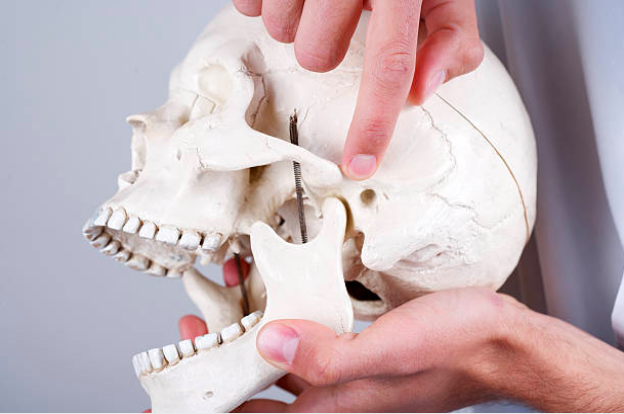
The temporomandibular joints, called TMJ, are what make it possible to open your mouth. It is made up of joints, muscles, and ligaments as well as the jawbone. Located on both sides of the head, the TMJ work together making it possible to eat, speak, and swallow. Sometimes the joints don’t slide properly, which can cause pain and other issues. TMJ disorders are a result of any problem that prevents the muscles, bones, and joints from working together.
Are you feeling tenderness in your jaw? We Can Help.
What are the causes of TMJ disorder?
Healthcare professionals do not understand completely what causes TMD. There are several factors that add to the muscle tightness and joint dysfunction characterized in this disorder. While it is unclear, some causes may include:
- Misalignment of teeth or jaw
- History of trauma
- Teeth grinding
- Stress or anxiety
- Poor poster
- Gum chewing
- Arthritis or other muscular disorders
What are the signs and symptoms?
Signs and symptoms of TMJ disorder can appear as:
- Pain in temporomandibular joints on one of both sides
- Tenderness in the jaw
- Aching around your ear or other parts of the face
- Difficulty chewing or pain while chewing
- Blurred vision
- Locking or clicking of the joint, making it difficult for the mouth to open or close
These issues can also cause a clicking sound when you open your mouth or chew. However, if there’s no pain or limitation of motion associated with your jaw clicking, you probably don’t need treatment for a TMJ disorder.
How are TMJ disorders diagnosed?
A medical doctor can diagnose a temporomandibular joint disorder by taking a look at the patient’s medical history and doing a comprehensive exam to find a cause for the pain and symptoms. There isn’t a specific test to diagnose a TMJ disorder, but it is common for a doctor to massage the joint and ask the patient to open and close. In extreme cases, an MRI may be prescribed to help detect any damage to the joint. With TMJ, pain can be coming from the muscle, cartilage, or joints so pinpointing which is bothersome is important.
How do you relieve the pain?
If you are suffering from TMJ pain, some interventions to try at home are:
- A combination of heating and icing
- Switching to a soft food diet
- TMJ exercises
- Relaxation techniques and relaxing facial muscles
- Sleeping on the opposite side of the pain
- Over-the-counter pain relievers
TMJ issues may go away on their own, but basic self-care rituals, such as doing specific exercises, massaging, and finding ways to reduce stress will help manage the pain and dysfunction. When treatment doesn’t help at home, medical treatment for TMD may relieve discomfort.
Can chiropractors help with TMJ?
Chiropractors can help with these conditions by relieving tension and dysfunction in the spine. Chiropractors will perform a chiropractic adjustment to alleviate pain and dysfunction by eliminating the pressure on various nerves. Many people who have TMJ disorders require continuous care in order to relieve symptoms. With the chiropractor’s overall goal being to relieve pain and restore the body to have the proper range of motion, an adjustment for TMJ can be beneficial.
What happens if TMJ isn’t treated?
As pain progresses, the jaw can become displaced. Not only can this be uncomfortable to the person, but it can also cause disordered breathing as well. Having a pushed back lower jaw serves the consequence of not having enough oxygen to enter the body at night, which can lead to chronic migraines and neck pain. This can also lead to brain fog throughout the day. It is important to listen to your body, and not let pain slow you down in order to lead a healthy life.

